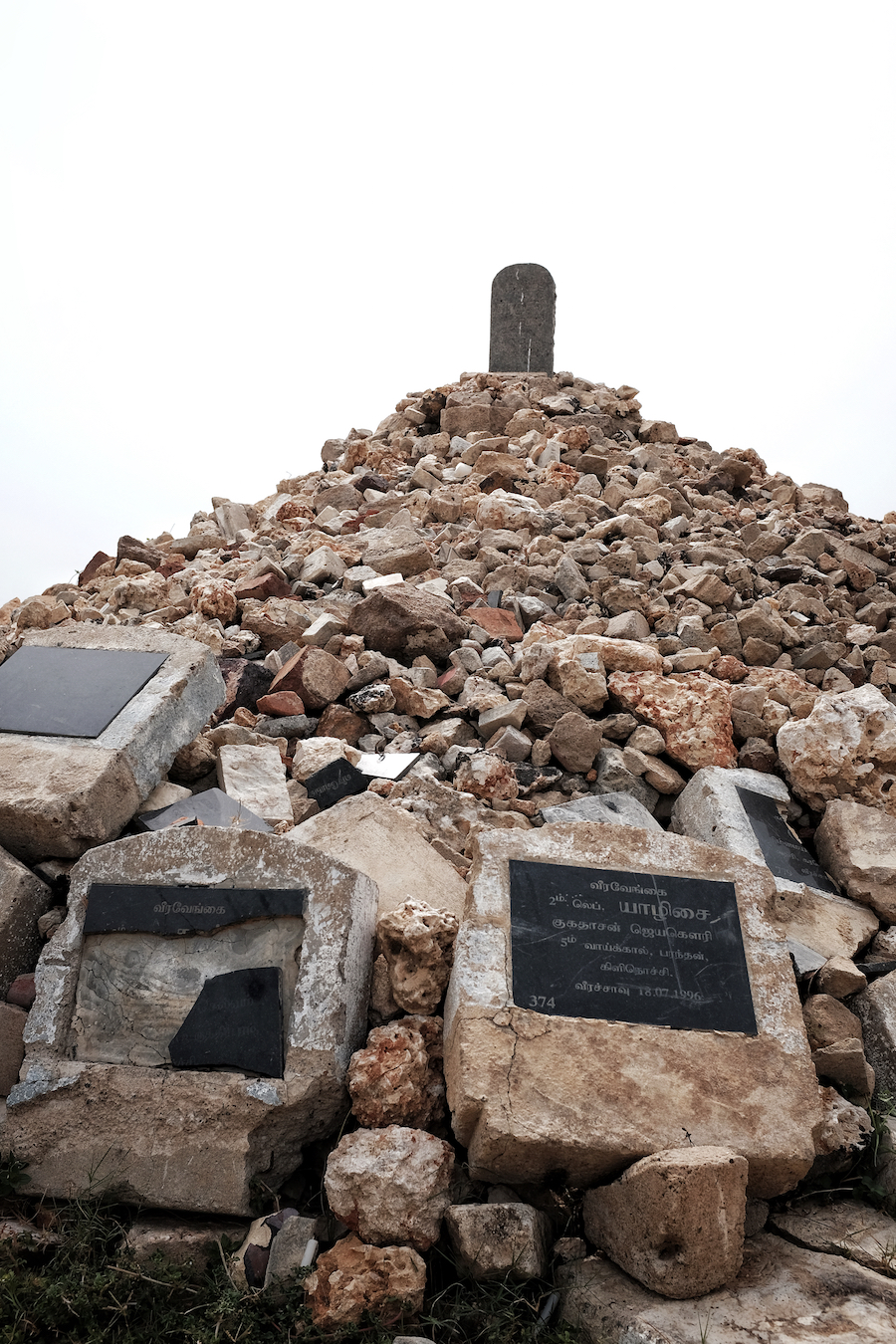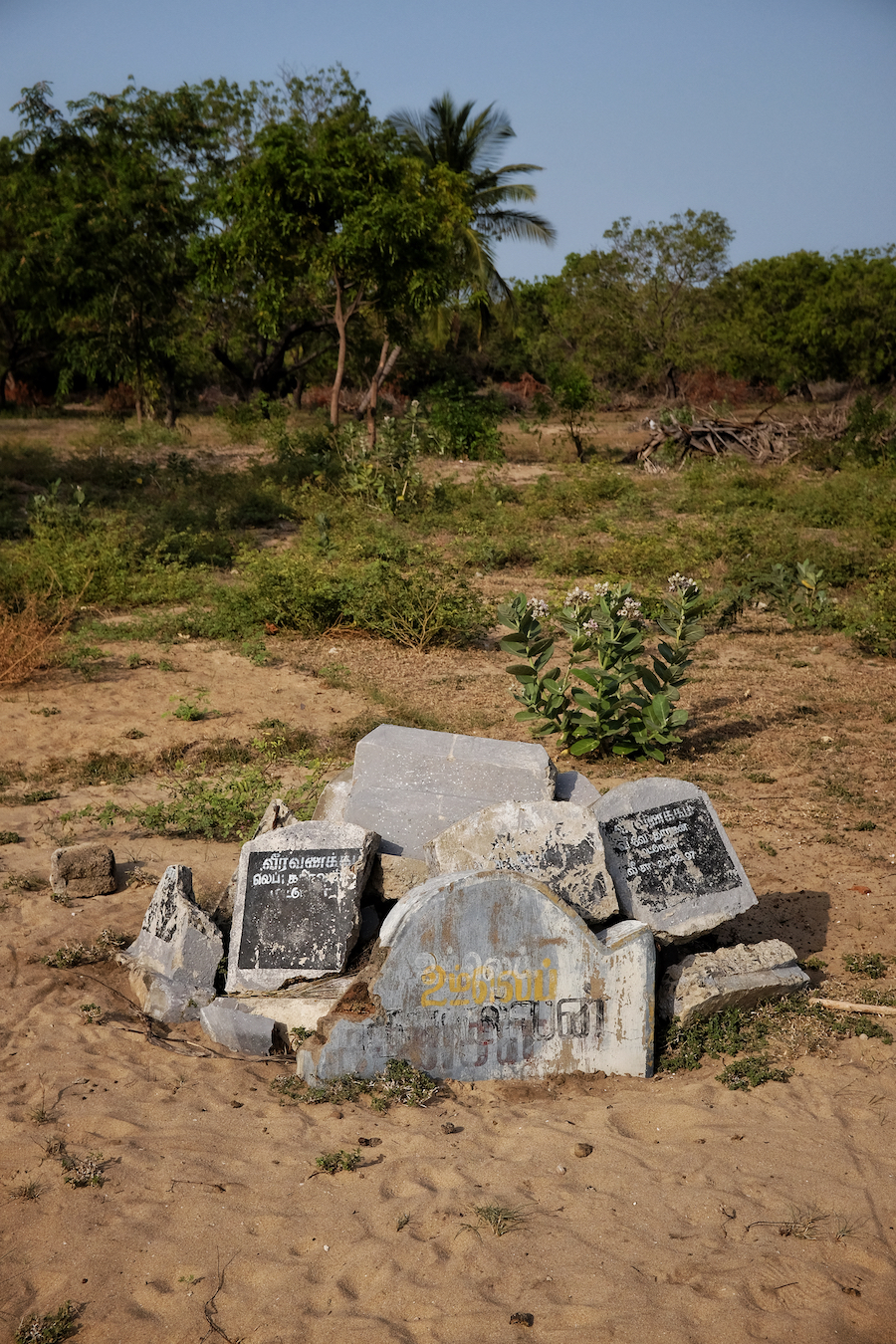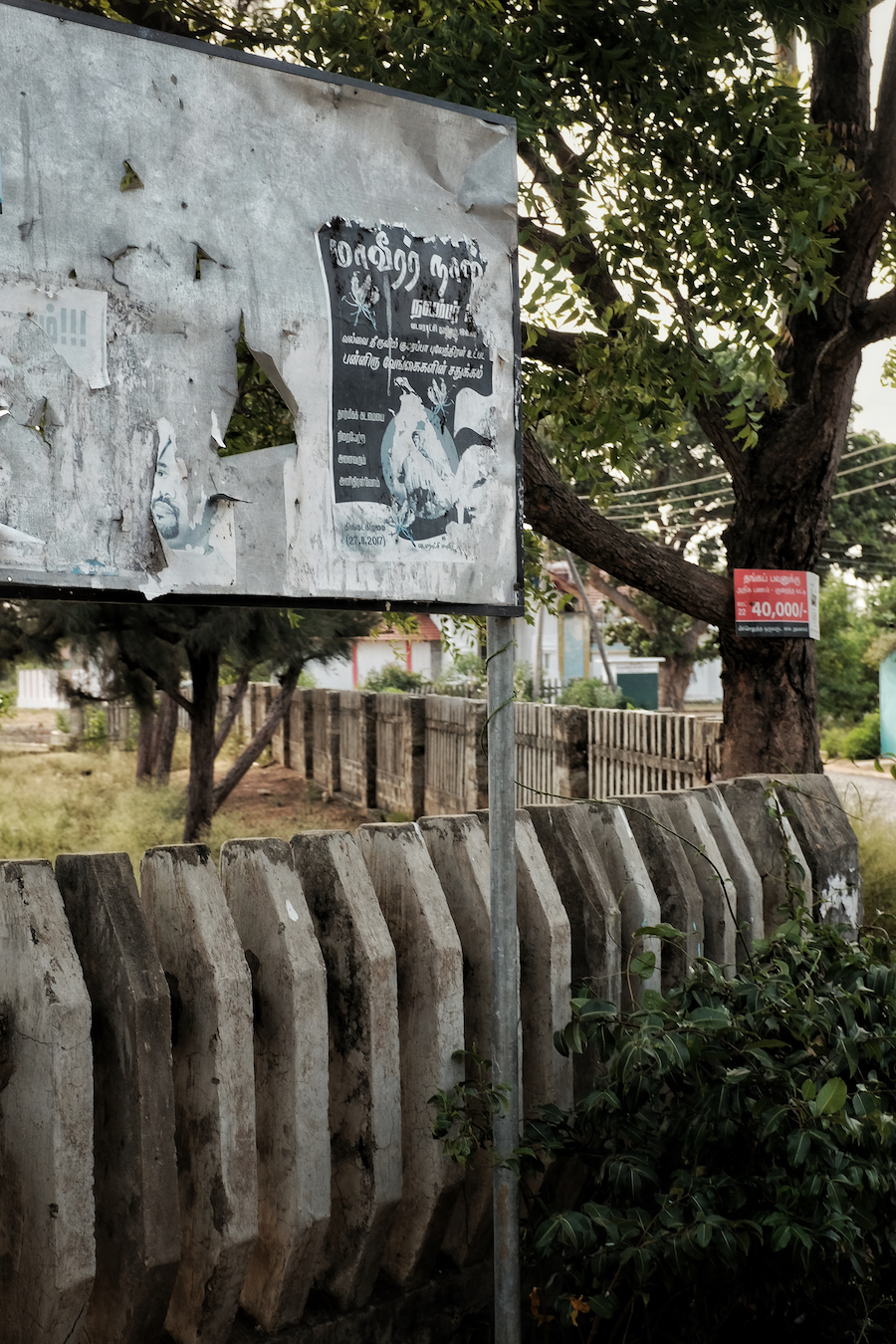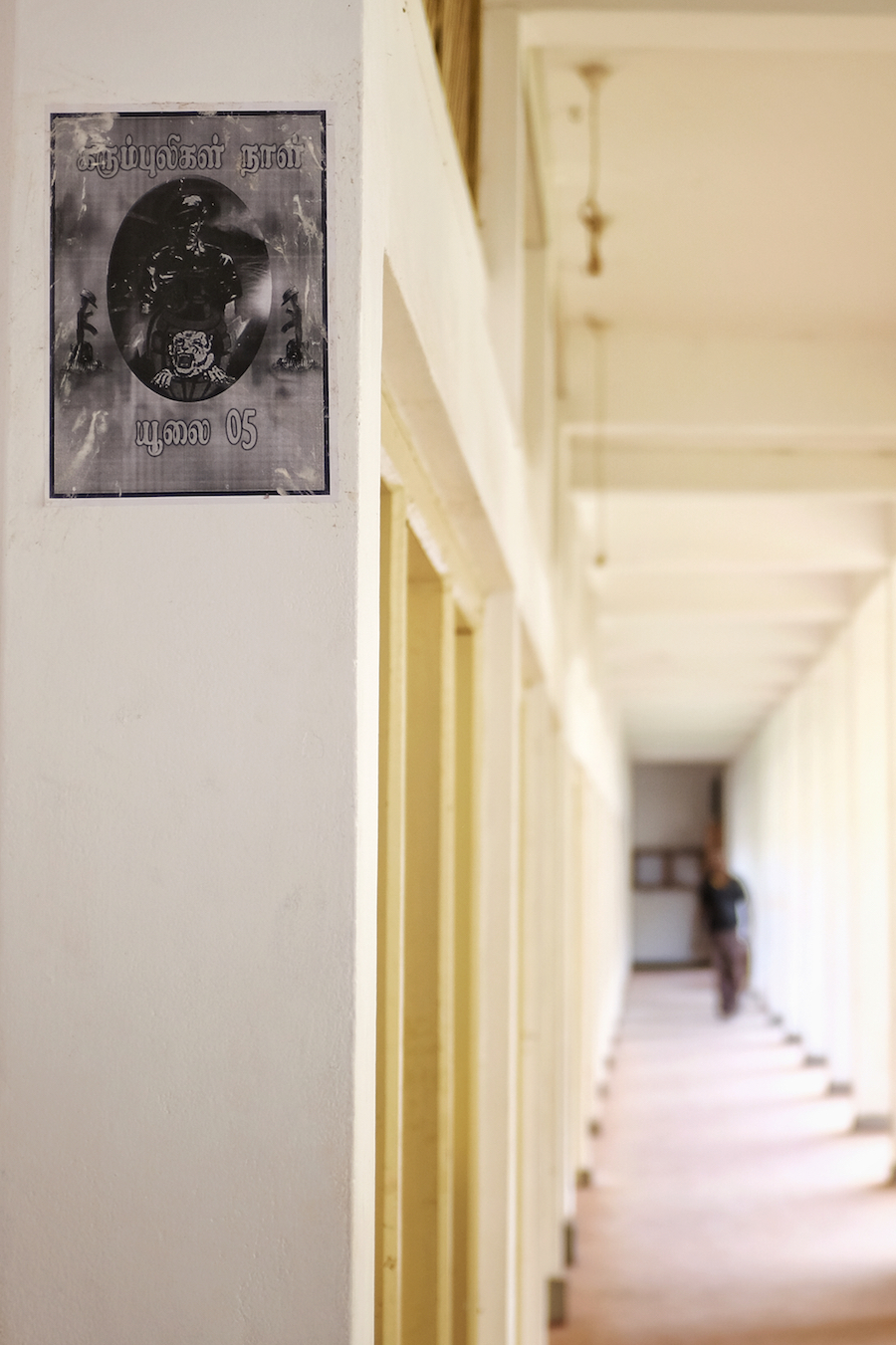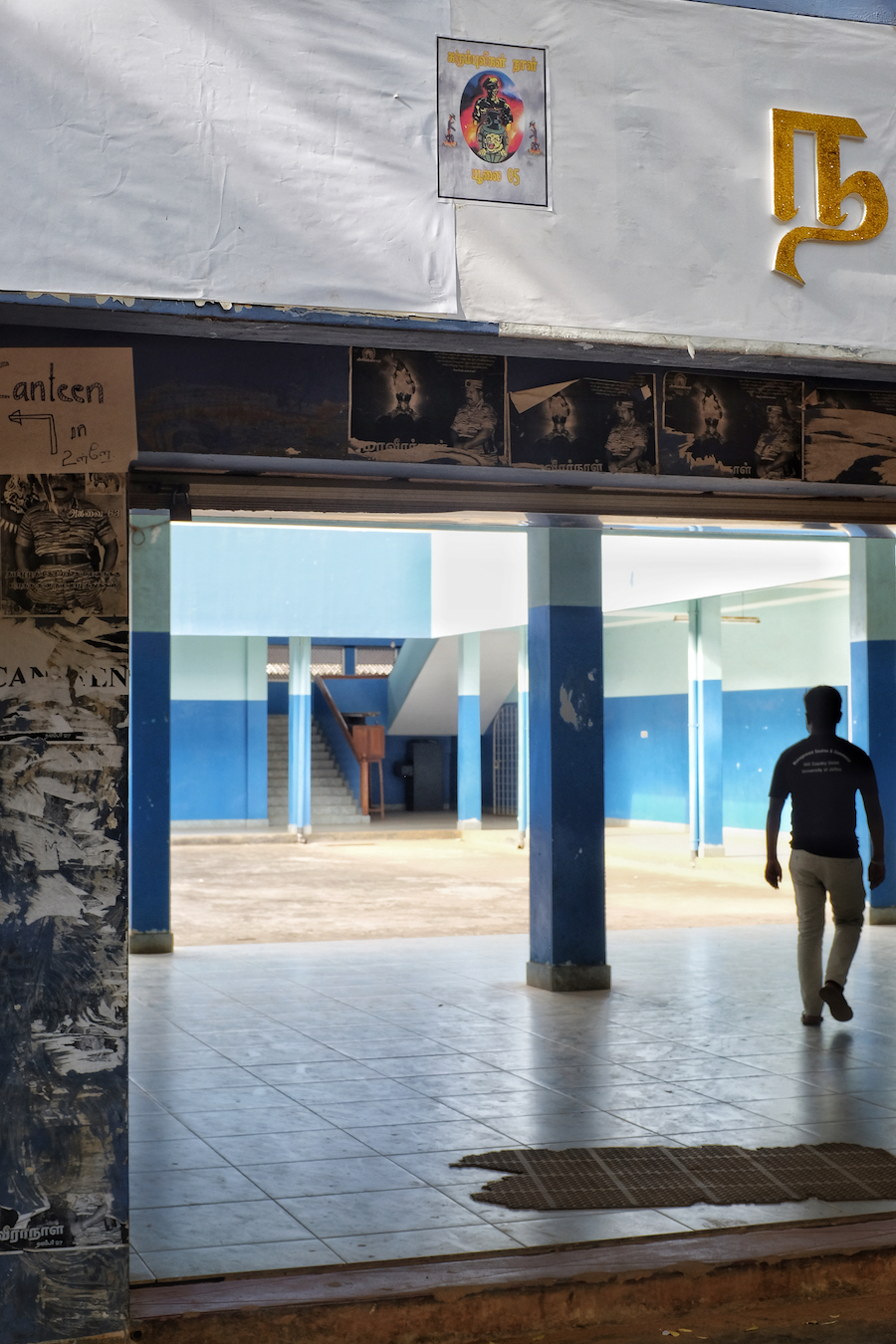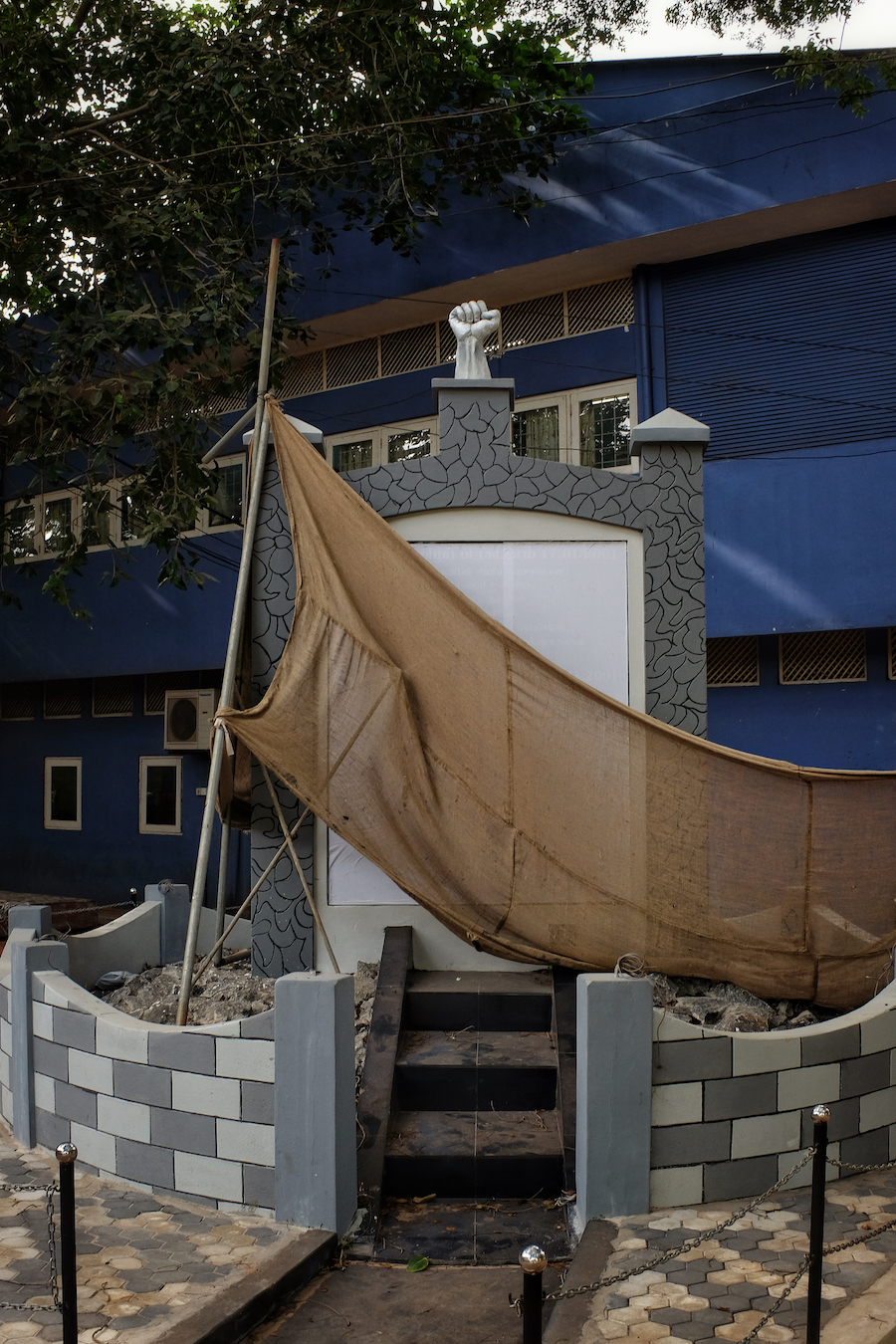“When memory dies a people die. But what if we make up false memories? That’s worse, that’s murder.”?
– Ambalavaner Sivanandan, in When Memory Dies.
The history of the Tamil people in the island of Sri Lanka after Western colonisation is a history of oppression by the chauvinist Sinhala-Buddhist state. Because of strength and resilience, the Tamil people acted against this oppression with resistance. This goes from peaceful protest for equal rights to a militant fight for a separate state. Tens of thousands of Tamil civilians and combatants lost their lives throughout the armed conflict.
Even remembering turns into a form of resistance
“For the survivors of human rights violations, mass atrocities and political violence the past is always present.”
But for the Tamil people in the North-East of Sri Lanka, even remembrance became a form of resistance.
?Even small efforts of commemorating the past are suppressed and restricted by the Sinhala state and security forces.?
This project “Signs of Resistance” wants to show the strength and resilience of the Tamil people, who continue to resist the oppressive Sinhala-Buddhist state by remembering their loved ones, by rebuilding destroyed memorials, by remembering the Tamil liberation movement and the armed struggle - even if discussing or remembering the LTTE in a positive way is strictly prohibited in Sri Lanka. On the other hand, the Sri Lankan state and army built huge victory monuments in many parts of the Tamil homeland. For many victims in the Tamil community, these monuments remind them of their trauma and continuing subjugation. The heroisation of an army, that deliberately killed more than 70.000 Tamil civilians in the last few months of the armed conflict (as many as 145.000 are still unaccounted for) and is notoriously known for its horrendous use of systematic sexual abuse and violence against Tamil civilians and captives, is just another disgusting form of reminding the Tamil people of their defeat.
From the North to the East
The first 7 photographs in the series were captured at the rebuilt Maaveerar Thuyilum Illams (Cemetery for fallen LTTE cadres) in Kanagapuram, Kilinochchi and Vakarai, between Trincomalee and Batticaloa. They were destroyed during and shortly after the armed conflict. At the recent Maaveerar Naal (annual Remembrance Day for the fallen cadres) tens of thousands attended the commemoration event despite intimidation and restriction by the Sri Lankan security forces - a clear sign that the Sri Lankan state can’t oppress the need of the Tamil people to remember and commemorate their people and their fighters.
The next 3 photographs were taken at Theeruvil in the very North of Jaffna. This is only one example of a former Tamil memorial statue that was destroyed by the Sri Lankan state.
?The last photographs were taken at the University of Jaffna. The Tamil students are often a symbol of resistance, and a lot of the struggle had its roots in these universities across Tamil Eelam, where young Tamil minds wanted to change the status quo.
The Tamil resistance goes on.
A photoessay by Sagi Thilipkumar. See more here.



